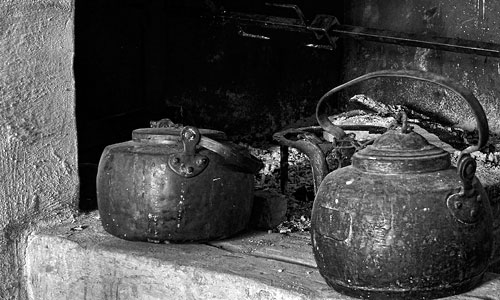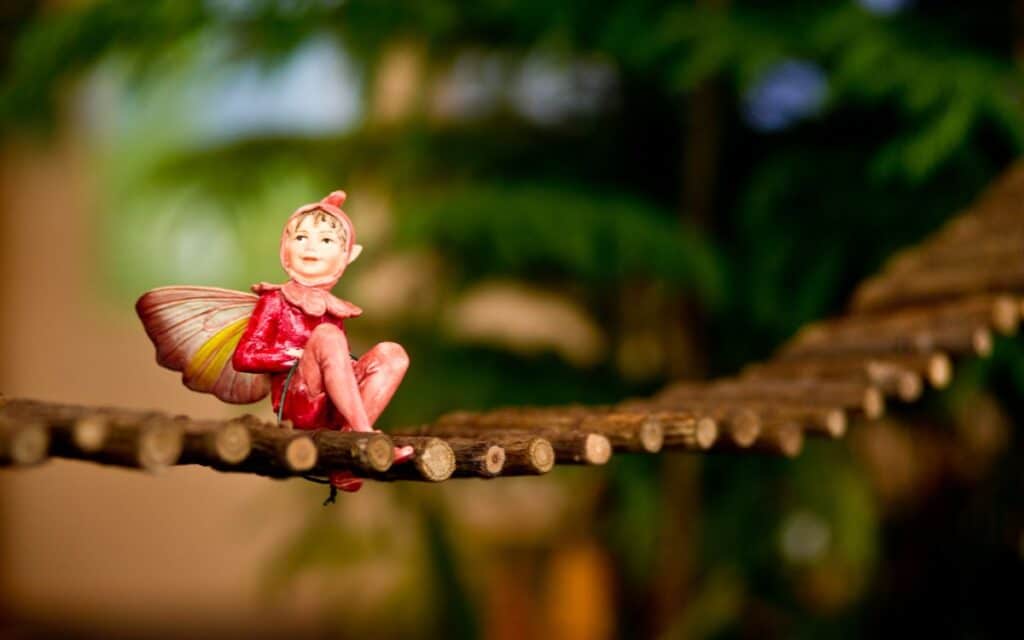AMY VAN CASTEELE says fairies can be helpful or problematic depending on how you deal with them…

In the Hebrides, as in other places in the British Isles, there are stories of people who managed to strike up a symbiotic relationship with the fairies, and benefited by this arrangement, until some prohibition was broken or someone else meddled and spoiled things.
On the island of Sanntraigh in the Outer Hebrides, there lived a woman who had just such an arrangement. One of the fairies would come to her home on a daily basis to borrow the woman’s kettle, and every time the fairy came the woman would recite this verse:
“A smith is able to make / Cold iron hot with coal.
The due of a kettle is bones / And to bring it back again whole”
The fairy would duly bring back the kettle filled with meat and bones, the remains of whatever meal the fairies had eaten that day, and this provided a perfect dinner for the mortal woman and her husband.
This mutually beneficial arrangement might have continued indefinitely if it were not for the following unfortunate event; one day, the woman had to leave the house to run an errand, and she left her husband in charge, explaining to him about the kettle and what he must do.
But the husband, who obviously wasn’t made of very strong stuff, was terrified when the fairy appeared and he slammed the door on her without giving her the kettle.
Displeased, the fairy snatched the kettle through a hole in the roof by magic and disappeared; nor did she return later with the kettle.
When the woman came home from her errand, you can imagine her displeasure when she found out what her foolish husband had done. “Good-for-nothing wretch,” she cursed him, “what didst thou do?”

Gathering up her wits and her courage the woman made her way to the fairy mound and managed to retrieve her kettle, as most of the fairies were out hunting. But a fairy watchman who stood guard set two black fairy dogs to chase her, and it was only by emptying out the contents of the kettle that the resourceful woman managed to escape. Never again did the fairy come to borrow her kettle; the damage had been irreparable.
Other stories of this nature are told about hogboons and brownies, household spirits that help out around the farm or protect it, until they are disrespected and start causing trouble. One family who bought a farm on the island of Orkney in the 60’s failed to honour ancient tradition and pay their respects to the farm’s hogboon; as a result things went dramatically downhill.
Their children sickened, their finances took a disastrous turn, animals died. Finally they gave up and left. The people who replaced them were careful to learn from their mistakes and placate the hogboon with offerings and respect.
Much further south, at Cranshaws on mainland Scotland, there once lived a brownie that dutifully helped to thresh the corn each year. But then, one day, some foolish person criticised the way in which he had mowed (stacked) the leftover stalks of straw and the brownie was (understandably) furious. He could be heard crying:
‘It’s no weel mowed! It’s no weel mowed!
Then it’s ne’er be mowed by me again;
I’ll scatter it o’er the Raven-stane,
And they’ll hae some wark e’er it’s mowed again!’
And sure enough, he took it to the nearby crag known as Raven-stone and hurled all the corn over the crag into the burn that ran at its foot. Then he disappeared and was never to be seen at Cranshaws ever again.








Interesting, fairies aye? I reckon your away with the fairies myself! Might want to focus more on reality i feel 🙂